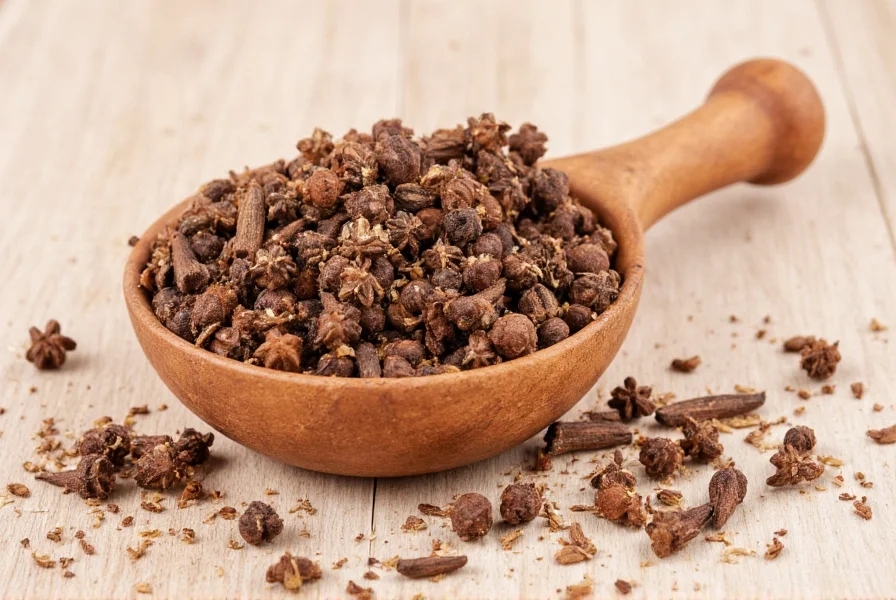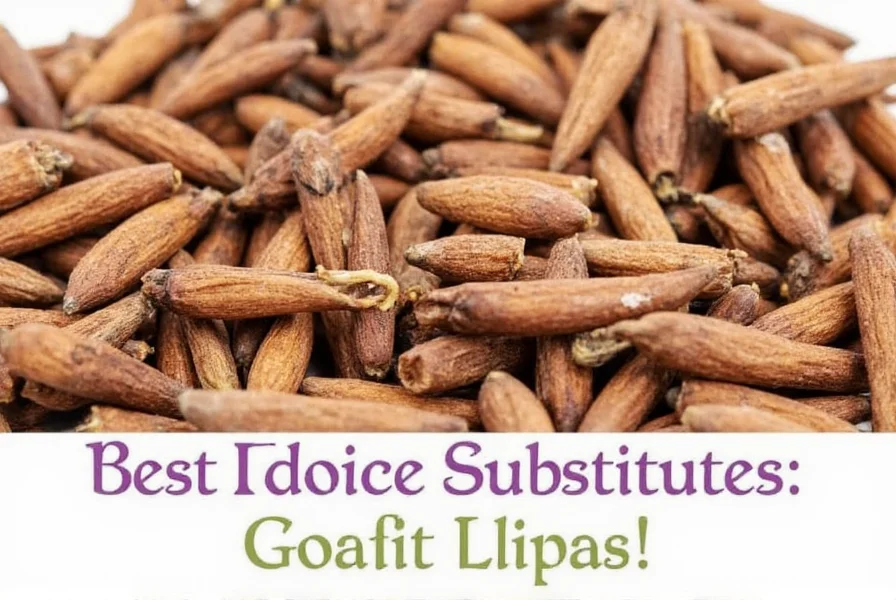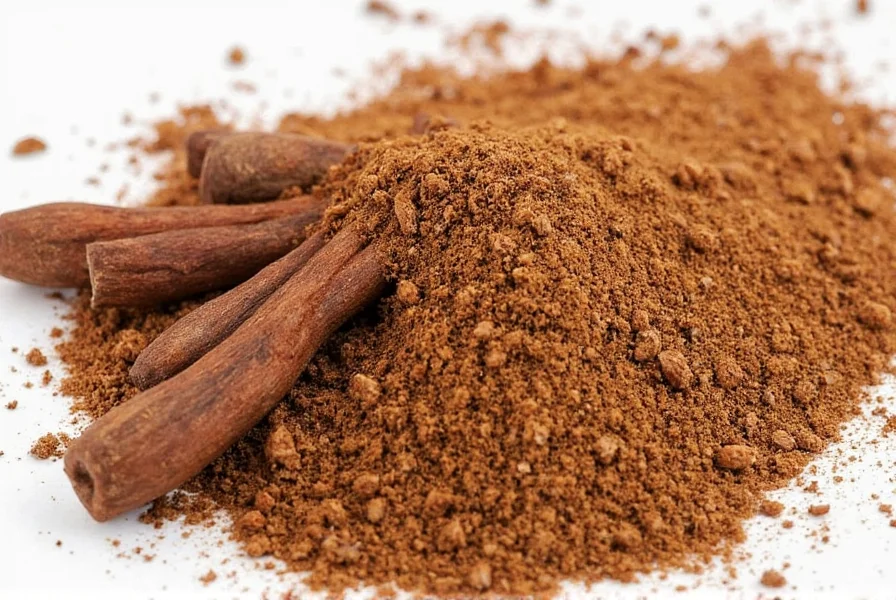Running out of cloves during cooking can disrupt your recipe, but several effective substitutes maintain flavor integrity. Cloves deliver a distinctive warm, sweet, and slightly bitter profile with eugenol as their primary compound, making them essential in spice blends, baked goods, and savory dishes. Understanding proper substitution ratios prevents flavor imbalances while accommodating dietary restrictions or pantry limitations.
Why Substitute Cloves?
Cloves' intense flavor means even small measurement errors can overpower dishes. Home cooks seek replacements for various reasons: unavailable ingredients, stronger allergy concerns than other spices, or desired milder profiles in children's recipes. Unlike some spices, cloves lack perfect equivalents, but strategic alternatives preserve culinary intent when used correctly.
Top Cloves Spice Replacements
Allspice: The Closest Match
Allspice combines clove, cinnamon, and nutmeg notes naturally, making it the premier cloves substitute for baking. Its balanced profile works in pumpkin pie, gingerbread, and mulled wine. Use ¾ teaspoon allspice per teaspoon of cloves called for. Avoid doubling quantities as allspice contains cloves' essence already, risking flavor dominance.

Cinnamon: Sweet Dish Alternative
When seeking a milder cloves replacement for desserts, cinnamon provides warmth without cloves' medicinal notes. Ideal for apple pies, oatmeal cookies, and chai tea. Substitute ½ teaspoon ground cinnamon per teaspoon of cloves. For stronger impact in spice cakes, increase to ⅔ teaspoon but never exceed 1:1 ratio to prevent overwhelming sweetness.
Nutmeg-Cinnamon Blend
This combination mimics cloves' complexity better than single spices. The best cloves replacement ratio uses equal parts nutmeg and cinnamon (¼ teaspoon each per teaspoon of cloves). Particularly effective in béchamel sauces, roasted vegetables, and holiday ham glazes. Freshly grated nutmeg significantly enhances flavor accuracy compared to pre-ground versions.
Apple Pie Spice: Convenient Pantry Solution
Most commercial apple pie spice blends contain cloves already, making them reliable cloves substitute when baking. Use 1:1 ratio in cobblers, crisps, and spiced cider. Check ingredient lists first—some blends omit cloves, requiring slight cinnamon adjustment. This substitution works best in fruit-based desserts where exact spice balance matters less than overall warmth.
Cardamom: Specialty Replacement
For Middle Eastern or Indian dishes traditionally using cloves, cardamom offers complementary citrusy warmth. Use ⅓ teaspoon cardamom per teaspoon cloves in biryanis, rice puddings, or Scandinavian pastries. Its floral notes differ significantly, so this cloves spice alternative works best when combined with ¼ teaspoon cinnamon for balanced results.
| Substitute | Ratio (per 1 tsp cloves) | Best For | Limitations |
|---|---|---|---|
| Allspice | ¾ tsp | Baking, mulled drinks | Can dominate if overused |
| Cinnamon | ½ tsp | Sweet dishes, mild recipes | Lacks cloves' depth |
| Nutmeg + Cinnamon | ¼ tsp each | Savory sauces, roasts | Requires two ingredients |
| Apple Pie Spice | 1 tsp | Fruit desserts, beverages | Check blend ingredients |
| Cardamom | ⅓ tsp | Specialty ethnic dishes | Different flavor profile |
Dish-Specific Substitution Guidance
Effective cloves replacement in recipes requires context awareness. In ham glazes, combine ½ teaspoon cinnamon with ¼ teaspoon nutmeg to replicate cloves' balance. For pumpkin spice blends, replace cloves with equal parts allspice. In chai tea, use cardamom at ⅓ the cloves quantity plus a cinnamon stick.
When substituting in meat marinades, increase supporting spices by 25%—for example, if replacing cloves in a 5-spice mix, boost star anise proportionally. Baking applications tolerate less variation; stick strictly to recommended ratios to prevent texture issues from excessive moisture in some substitutes.
When Not to Substitute Cloves
Certain applications demand cloves' unique properties. Traditional speculaas cookies require cloves' eugenol for proper dough fermentation. In pickling recipes, cloves' antimicrobial properties affect preservation—substitutes may compromise food safety. Whole cloves studded in onions for French onion soup provide visual cues that ground substitutes cannot replicate.
Creating Custom Cloves Replacement Blends
For frequent substitutions, prepare a versatile mix: combine 2 parts cinnamon, 1 part allspice, and ½ part nutmeg. Store in an airtight container for up to 3 months. This homemade cloves substitute works at 1:1 ratio in most applications except where cloves' distinct flavor dominates, like clove-studded oranges for mulled wine.

Practical Measurement Tips
When measuring substitutes, use leveled teaspoons rather than heaping ones. For precision in small-batch baking, convert to grams: 1 teaspoon ground cloves equals approximately 2.6 grams. Most substitutes follow similar weight ratios. Remember that fresh spices lose potency after 6 months—stale substitutes require up to 25% more quantity, potentially altering flavor balance.
Frequently Asked Questions
Can I use ginger as a cloves substitute?
Ginger makes a poor direct substitute due to its sharp, citrusy profile differing significantly from cloves' warmth. In gingerbread recipes containing both spices, you may increase ginger by ¼ teaspoon when omitting cloves, but this doesn't work for most other applications requiring cloves' specific flavor compounds.
What's the best cloves replacement for toothache relief?
For dental pain relief where cloves' eugenol is therapeutic, no kitchen spice substitute works effectively. Clove oil contains concentrated eugenol (70-90%) that other spices lack. Over-the-counter benzocaine products or temporary dental filling kits provide safer alternatives than spice substitutions for oral pain.
How does cloves substitution affect baking chemistry?
Cloves contain eugenol which interacts with baking soda/powder. Substitutes lacking this compound may cause slight texture differences in chemically-leavened recipes. In most cases, the impact is negligible (<5% volume difference), but for precision baking like soufflés, maintain exact spice quantities using proper substitutes rather than omitting cloves entirely.
Can I substitute whole cloves with ground substitutes?
Yes, but adjust quantities: 1 whole clove equals approximately ⅛ teaspoon ground cloves. When substituting other spices, use ¾ of the ground spice quantity you'd use for ground cloves. For example, if replacing 1 whole clove, use ⅛ × ¾ = 1/10 teaspoon allspice. Whole spices release flavor slower, so ground substitutes may require slight timing adjustments in cooking.
Do cloves substitutes work in pickling recipes?
Most substitutes lack cloves' antimicrobial properties essential for safe pickling. Allspice provides partial preservation benefits at 1:1 ratio but requires additional citric acid (¼ teaspoon per quart). For food safety, avoid substituting cloves in canning recipes unless using tested alternatives from authoritative sources like the National Center for Home Food Preservation.











 浙公网安备
33010002000092号
浙公网安备
33010002000092号 浙B2-20120091-4
浙B2-20120091-4